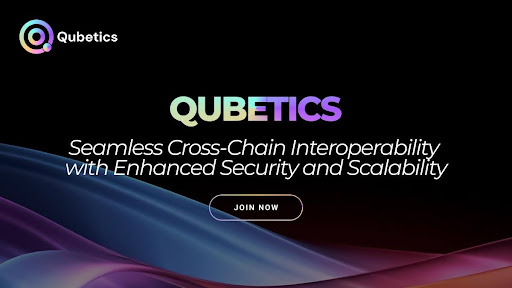Cryptocurrency has undoubtedly been one of the most exciting industries to watch over the last few years, and for good reason. We’ve witnessed insane growth in the value of coins like Bitcoin, Ethereum, and Solana. But just like any other fast-moving industry, new players are constantly emerging, looking to offer something fresh or even fix the shortcomings of the established cryptos. Right now, there’s a buzz around a few altcoins—Qubetics, Render, and Arbitrum—that are carving out their own paths in the space. These coins are more than just speculation—they have real utility and the potential for massive growth in 2025 and beyond.
In particular, the emergence of Layer-2 solutions like Arbitrum and projects focused on revolutionizing cross-border transactions, like Qubetics, are shaking up the market. These coins are not just interesting from an investment standpoint—they’re solving real-world problems. While Render is making waves in the decentralized rendering space, Qubetics aims to simplify cross-border transactions, making it easier than ever for businesses and individuals to send money internationally. All three are poised to continue growing, but how do they stack up in terms of potential, real-world use cases, and long-term viability?
Qubetics ($TICS) stands out as an innovative cryptocurrency solution that directly addresses pain points faced by businesses, professionals, and individuals in the realm of cross-border transactions. As more people look for fast, secure, and low-cost alternatives to traditional banking systems, Qubetics provides an enticing option. In this comparative analysis, we’ll dive deep into what makes Qubetics, Render, and Arbitrum some of the top cryptos for massive growth—and why you might want to pay attention to them in 2025.
Qubetics: Revolutionizing Cross-Border Transactions for the Future
Qubetics, the cryptocurrency that’s turning heads in the presale market, is all about making cross-border transactions easier and more efficient. Right now, the 22nd Qubetics presale stage, with over 479 million tokens sold to more than 20,300 holders, raising an impressive $13.2 million. At just $0.08073 per token, Qubetics ($TICS) is making waves as an affordable investment with massive ROI potential. For instance, analysts are predicting that $TICS could reach $0.25 by the end of the presale, offering a 209.67% return on investment. After the presale, the coin is expected to soar to as much as $5—making it an enticing option for those looking to get in early.
So, what exactly makes Qubetics so appealing? First off, it’s all about solving one of the biggest problems in the crypto space: cross-border transactions. International money transfers have traditionally been slow, costly, and complicated, especially for businesses or professionals who need to send money across borders quickly. By leveraging blockchain technology, Qubetics simplifies the process, offering near-instant transactions with low fees, making it easier for businesses to pay vendors, workers, and contractors globally.
Moreover, Qubetics addresses the limitations of traditional remittance systems that rely on banks, which can often be slow and expensive. For example, when sending money from the US to countries like India or Mexico, users typically face high fees and lengthy processing times. With Qubetics, the same transaction can be completed in seconds or minutes with minimal fees. This opens up a world of possibilities, particularly for businesses and professionals who operate on a global scale and need a quick, cost-effective solution.
Render: The Decentralized Future of 3D Rendering
Render, unlike Qubetics, focuses on a completely different niche—decentralized 3D rendering. While the rise of the metaverse and virtual reality (VR) spaces continues, the demand for high-quality graphics and renderings is skyrocketing. Traditionally, 3D rendering requires expensive hardware, specialized software, and a lot of energy. Render aims to disrupt this industry by offering decentralized cloud rendering powered by blockchain technology.
By using Render, 3D artists, game developers, and even architects can access massive computational power at a fraction of the cost of traditional cloud services. Render allows users to rent out idle computing power to others in need of rendering services, creating a decentralized network of computing power that can be tapped into whenever necessary. This makes Render an excellent choice for those looking to participate in the growing demand for 3D assets and visuals in industries like gaming, film, and digital design.
In terms of growth potential, Render has a unique advantage. The demand for high-quality rendering is expected to continue growing as more industries explore virtual worlds and immersive experiences. Whether it’s creating realistic virtual environments or rendering complex visual effects for movies, Render is positioning itself to be a key player in this growing sector.
Arbitrum (ARB): Scaling Ethereum’s Potential
Arbitrum, the Layer-2 scaling solution for Ethereum, is another crypto that’s expected to see massive growth in 2025. For those unfamiliar with Layer-2 solutions, they’re essentially platforms built on top of an existing blockchain (like Ethereum) to enhance its scalability, speed, and cost-efficiency. Ethereum, while hugely popular, has struggled with high gas fees and slow transaction speeds during times of heavy network congestion. Arbitrum solves this issue by processing transactions off-chain and then settling them on Ethereum, significantly improving the overall performance of the network.
Arbitrum’s $ARB token is the key to its ecosystem, providing incentives for users and validators within the network. As Ethereum continues to grow, the demand for solutions that can scale with it will only increase. Arbitrum stands out because it allows Ethereum to handle more transactions without sacrificing security or decentralization. It’s one of the top cryptos for massive growth because it essentially enhances Ethereum’s core features while solving some of its biggest problems.
Moreover, Arbitrum’s integration into decentralized finance (DeFi) protocols further increases its value. By offering low-cost transactions, it makes DeFi applications more accessible and practical for everyday users. The Ethereum ecosystem, with Arbitrum’s help, is poised to continue dominating the blockchain space as the backbone of decentralized applications.
Understanding Cross-Border Transactions in Cryptocurrency
Cross-border transactions have always been a challenge, even with traditional finance systems. These transactions often involve multiple intermediaries, which increases costs, processing times, and the potential for human error. Cryptocurrencies like Qubetics are changing the game by providing a faster, cheaper, and more secure way to transfer funds across borders. By leveraging blockchain’s transparency and security, Qubetics allows individuals and businesses to make international transactions in a matter of seconds, bypassing the often slow and costly systems of banks.
The rise of cryptocurrencies also opens the door to financial inclusion for individuals who have been traditionally underserved by banks. In many countries, people don’t have access to a bank account or the traditional financial infrastructure. However, with the help of digital currencies like Qubetics, people can now participate in the global economy by sending and receiving money without the need for an intermediary.
Conclusion
In 2025, we’re likely to see Top Cryptos Poised for massive growth in the crypto space, with projects like Qubetics, Render, and Arbitrum leading the charge. Whether it’s improving cross-border transactions, disrupting the rendering industry, or scaling Ethereum’s performance, these projects are perfectly positioned to meet the evolving needs of businesses, developers, and individuals alike. If you’re looking to get in early on some of the most promising cryptos for massive growth, you might want to keep an eye on these three.
Qubetics, in particular, stands out for its ability to solve real-world problems related to international transactions, while Render and Arbitrum bring unique value to their respective markets. As the digital finance landscape continues to evolve, these cryptocurrencies are poised to make waves. So, if you’re ready to diversify your portfolio and take advantage of the opportunities in the blockchain space, consider investing in these projects.
For More Information:
Qubetics: https://qubetics.com
Telegram: https://t.me/qubetics
Twitter: https://x.com/qubetics
FAQs
1. What is Qubetics and how does it simplify cross-border transactions?
Qubetics is a blockchain-based cryptocurrency that allows for fast, secure, and low-cost cross-border transactions. It makes international payments easier for businesses and individuals by bypassing traditional banking systems.
2. What makes Render a unique investment in the crypto space?
Render revolutionizes the 3D rendering industry by offering decentralized cloud rendering, allowing users to tap into idle computing power for low-cost rendering.
3. How does Arbitrum enhance Ethereum’s scalability?
Arbitrum is a Layer-2 solution for Ethereum, processing transactions off-chain to improve speed and reduce gas fees. It allows Ethereum to scale while maintaining security.
4. What is the potential ROI of Qubetics?
Analysts predict that Qubetics ($TICS) could reach $0.25 by the end of the presale, offering a 209.67% ROI. After the presale, its price could soar to $5, offering 6093% ROI.
5. How can I participate in Qubetics’ presale?
You can purchase $TICS tokens for $0.08073 in the 22nd presale stage, with over 479 million tokens sold and over 20,300 holders so far.





